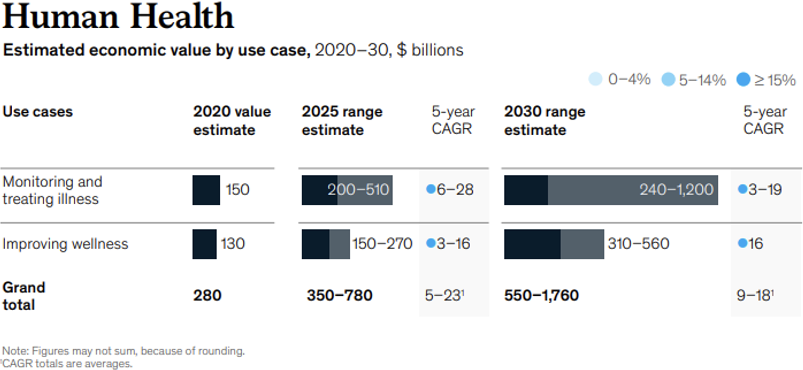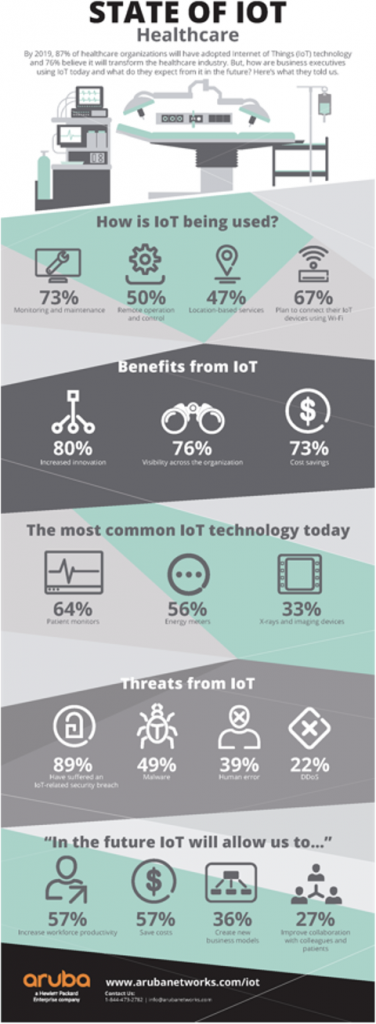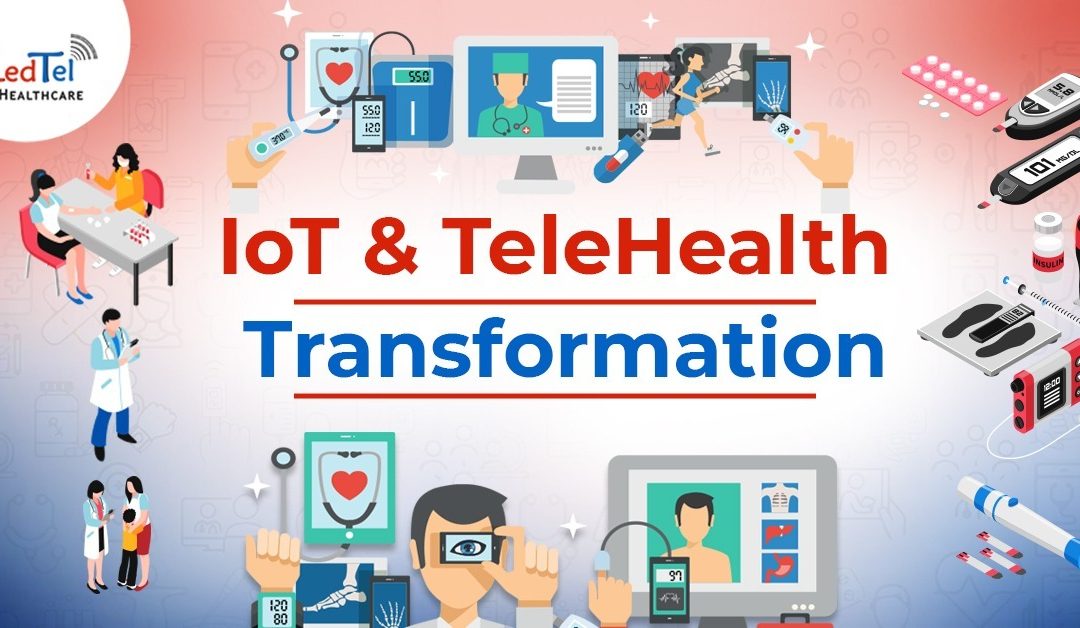Overview
Attend any telehealth conference and you’ll realize that it is becoming fashionable to talk about “reinventing” healthcare and giving telemedicine a push. While patients do seem to be on board with this idea there is still an air of skepticism amongst people who deliver care.
At this point, when awareness about such an intervention is high, early adoption has begun and investments are flowing in, it is a good time to pivot the way telehealth monitoring is thought of as a cheap digital rip-off of in-person care. When designed and used appropriately, telehealth can help reduce healthcare costs, improve patient outcomes and make healthcare accessible to the most economically backward sections of society.
What is IoMT?

Internet of Medical Things (IoMT) is an application of IoT wherein a network of devices, hardware infrastructure, and software are interconnected such that they can all seamlessly talk to each other and exchange information. This technology has enabled disruptions like home care and remote care enabling a virtual and patient-centric approach to healthcare delivery.
IoMT’s impact on the healthcare system is undeniably huge with projected growth from USD 30.79 billion in 2021 to USD 187.60 billion in 2028 at a CAGR of 29.5% during the 2021-2028 period. With the potential it has, we can open huge doors of possibilities in making healthcare more affordable by decreasing operational costs and inefficiencies and increasing accessibility of quality healthcare.
How Is It Used in Healthcare?

IOMT Has Found 3 Very Impactful Applications:
Home Care: With a rise in a home care model, (where paramedics go to patients’ houses to deliver care) devices that can be connected to a phone/smart hub and transfer data directly to a doctor for review have seen a rise in demand.
Trained medical practitioners are given a set of devices that they take along with them to a patient’s house. Once the patient’s vitals are measured, these readings are transferred to a mobile application where all of this data is stored and analyzed. Based on these readings patients are advised their plan of action to improve their condition.
In such a setup, patients are given devices (that the doctor recommends) and a mobile application. Based on a schedule as advised by their doctor the application reminds them and records tests are done and their readings. These are stored, analyzed, and displayed to the doctor such that it helps them take data-backed decisions to provide care to their patients.
Screening camps: In low-resource settings, where healthcare is either inaccessible or unaffordable, there are often population screening camps conducted where mass screening of people takes place. In such a setup having, one aggregator device of this huge pool of data helps governments and decision-makers form their policies and at the same time individual-level data helps patients seek the care that they need.
All of these scenarios are executed effortlessly because of IoMT.
Doors that telehealth has opened
- Tackle the chronic disease upsurge: The biggest issue with chronic diseases is the monitoring and relevance of data. With monitoring, data that can help prevent mishaps is data that is real-time. By using such technologies, it is possible to aggregate data and alert doctors and patients in real-time, to take action.
- Reduce the unnecessary visits to the hospital: In case of a non-emergency situation, connecting to a doctor and receiving advice is simplified using such technologies. This is time and cost-efficient for all the stakeholders of the healthcare system.
- Deliver quality healthcare to the most remote corners of the world: Telehealth makes it easy for information to travel where doctors cannot. In such a hyper-connected world, it should be a priority to make healthcare equitable to all. IoMT is one of the easiest ways to get there. With an increase in the penetration of the internet and smartphones, healthcare should be the next most readily available service to such sections
- Streamline data collection and mapping: One of the biggest challenges in healthcare right now, is data. There is too much data and too still too little information. Digitizing data using such technologies would help us eliminate all the noise from the system and at the same time arrive at conclusions that not only help us cure diseases but also prevent them.
- Reduce misdiagnosis and deliver the much-needed care on time: In the absence of healthcare, the possibility of believing information that is either false or not relevant in a patient’s context is very probable. Connecting doctors to patients in such a way would help doctors present information and advice to their patients and would help patients refer to one singular source of truth.

Why is now a good time to leverage these opportunities?
- Fragmented e-health system – The healthcare system has many avenues that can be automated and made more efficient. Currently, a large number of software are doing that for some specific use cases. Interoperability amongst them is low or often non-existent making the practitioner’s life very tough. Driving adoption in such a scenario is not only tough but also not serving our goal of making healthcare more user-friendly for every.
- Data security – Data security remains to be the topmost concern of most providers and payers. The fear of data being sold to third parties or used to serve business means is one of the biggest barriers to adoption. Unfortunately, this barrier exists at both, the patient and provider end. Building an infrastructure that is robust enough to ensure data privacy and having a high regard for ethics are very crucial to driving this fear
Way forward
- Keep building!: Getting the entire healthcare system sorted and automated isn’t a one-day job. Loopholes and broken areas will remain. At this point, what is important is to keep building with a singular focus on optimizing high impact areas of the healthcare journey of patients and while doing this keeping in mind all the stakeholders of this infrastructure.
- Interoperability is key: Build systems that can talk to each For adoption to be high and value to be delivered, our solutions need to be holistic. Without interoperability, none of it is possible.
- Let’s not revolutionize healthcare – Everything old and traditional is not all bad. The focus should not be changed only, the focus should be changed where needed. Instead of revolutionizing the system let’s use IoMT and another health tech to build new synergies between the old and the new.
Contact us!
MedTel’s RPM platform incorporates connected diagnostic devices, a smartphone app, and a web-based dashboard for hospital access and review. These devices include a digital blood pressure machine, body composition monitor, glucometer, fetal heart rate monitor, and hemoglobinometer. Our advanced Connected Care Solutions provide remote pregnancy care which reduces physical clinic visits while monitoring health parameters for complications.
